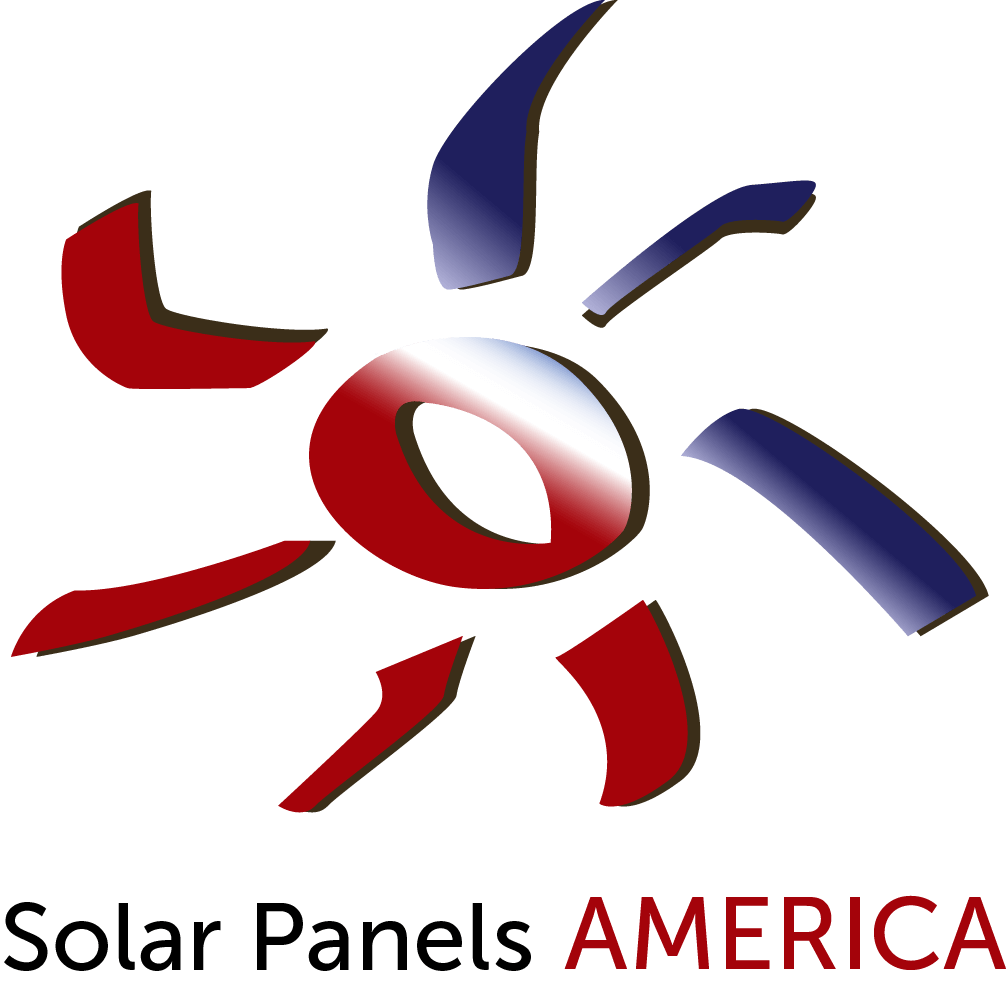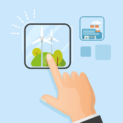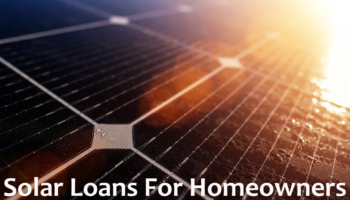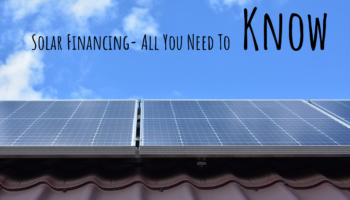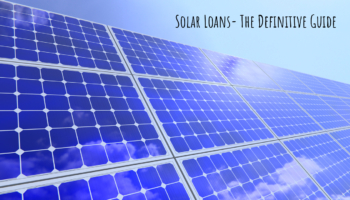Government Loans For Solar Panels
Grants are financing given to market renewable energy that does not have to be paid back. Qualifying groups include rural or low-income homeowners, farms, Native American tribes, colleges, and nonprofit organizations.
Harnessing solar energy while having numerous long-term benefits — can be a costly undertaking. The following guide on Government Loans For Solar Panels can help current and future homeowners understand federal financing choices available to them. The U.S. government is committed to renewable energy projects, and with good reason. Some of the ways its investment helps the United States as a whole include:
- Moving away from finite fossil fuels and helping the nation to become energy independent
- Improving the environment by reducing CO2 emissions
- Harnessing the infinite nature of Solar Power
- Creating more jobs within businesses focused on energy efficiency
To facilitate all the benefits listed above, the U.S. government now provides a 30 percent Investment Tax Credit (ITC) of the cost of the system you install. In addition to this rebate, qualified individuals can take advantage of even more savings programs. Federal grants are a perennial favorite across the board given that they don’t need to be paid back, while federal loans and mortgages often offer fixed interest rates much lower than those available from private lenders. Keep reading to learn more about federal financing choices.
Government solar loans
In an effort to incentivize the growth of solar energy, various departments within the federal government offer Government Loans For Solar Panels to make the transition more affordable. No typical residential solar energy grants are awarded directly at the federal level; rather, the branches provide grants to low-income and rural areas alongside tribes, farms, schools, and nonprofit organizations.
With the average lifespan of a solar panel reaching beyond 20 years and electric bills being radically reduced or eliminated entirely, these grants provide cost-saving measures for people who need them most.
Where Can You Find Department of Energy Solar Grants?
It should be no surprise that the best place to find federal grants is by exploring federal departments — namely the U.S. Department of Energy’s Office of Energy Efficiency and Renewable Energy. This site provides an exhaustive database of both current and previous opportunities, allowing individuals to familiarize themselves with the grant format and eligibility conditions. Users can also sign up for an e-mail reminder whenever new grants are published.
Green Retrofit Grants
U.S. Department of Housing and Urban Development
Operating under HUD, the Office of Affordable Housing Preservation works with homeowners in low-income areas to fit and provide upkeep for alternative energy resources, such as solar panel systems. Funds are disbursed via a $250 million funding provided by the Housing Recovery Act and must be spent within two years of receipt.
Tribal Energy Program
U.S. Department of Energy
Funding offered through the DOE’s Office of Indian Energy Policy and Programs is geared toward helping tribes pursue technologies – and fuel-neutral jobs. Through $15 million in new investments, tribes can request support to set up energy generating systems or energy efficiency measures for tribal structures; community-scale energy generating systems or electricity storage on Tribal lands; electricity infrastructure and integrated energy systems to electrify Tribal Buildings, and other energy-related infrastructure projects.
REAP Grants
U.S. Department of Agriculture
Providing grants of up to $20,000, the Rural Energy for America Program helps farmers and small rural businesses obtain and install renewable energy systems. Recipients may also use the grant to make improvements to existing energy efficiency systems. Agricultural producers must demonstrate that at least half of the gross income comes from agribusiness and show they can pay for at least 75 percent of the project to qualify.
High Energy Cost Grants
U.S. Department of Agriculture
The USDA made these grants to help rural communities to improve the creation of energy in areas with abnormally high energy costs. Funds may be used to acquire, build, install, repair, replace, or enhance systems that improve energy production and distribution, be they on or off-the-grid.
Renewable Energy Grants
U.S. Department of the Treasury
Also called the 1603 Program, this incentive reimburses applicants for some of the cost of installing a solar system instead of tax credits. Payments are made only after the machine has been put in service, meaning folks will have to have enough funds on hand to pay for the system and its setup initially.
Government Loans For Solar Panels
The FHA’s PowerSaver Program
Federal Housing Administration (FHA) through its PowerSaver loan program offers three financing options for homeowners to make energy efficiency and renewable energy upgrades in their residences. For all three PowerSaver products, borrowers must pick from a list of approved PowerSaver lenders. Please check the HUD site to find a list of participating FHA approved lender for your program. PowerSaver products are not currently provided in all states, so all potential applicants are encouraged to first check the program website to guarantee product availability in their own location.
Eligibility
Homeowners must have following requirements to be eligible for the program:
- Minimum credit score of 660
- Maximum total debt to income ratio of 45% (monthly income divided by monthly debt payments)
- Maximum combined loan-to-value: 100%
- Property type: One-unit, owner-occupied, principal residence properties only
- Appraisal requirement: exterior-only inspection evaluation or other FHA method of appraisal
- PowerSaver insures lien position in the first place, or second place, and also insures loans without lien, as long as the loan amount is less than $7,500.
Eligible Measures
Eligible home energy updates include, but are not necessarily limited to, the following:
A whole home update through Home Performance with ENERGY STAR
Insulation and air sealing
Replacing doors and windows
Upgrading heating, venting, and air-conditioning systems and warm water systems
Home automations systems and controllers (e.g., smart thermostats)
Installing solar photovoltaic (PV) systems, solar thermal hot water systems, small wind power, or geothermal heat pumps
PowerSaver Home Energy Upgrade–Up to $7,500
This unsecured consumer loan is designed for smaller jobs (e.g., insulation, air and duct sealing, water heating, replacing heating and cooling equipment, etc.). It does not need a home appraisal or lien on the property. Single-family homeowners may qualify for the loan if they have manageable debt and a credit score of 660 or higher. PowerSaver participating lenders, markets, and contact information is available here.
This Title I loan is intended for funding larger retrofit projects, including energy efficiency, PV, solar hot water, geothermal, or other renewable energy projects. A house appraisal or equity is generally not mandatory, but PowerSaver lenders may ask it if required by their investor. Borrowers can’t currently have an existing home equity loan, another lien, or second mortgage to qualify for this product.
PowerSaver Second Mortgage (Title I)–Up to $25,000
This Title I loan is meant for funding larger retrofit projects, including energy efficiency, PV, solar hot water, geothermal, or other renewable energy projects. A home appraisal or equity is usually not required, but PowerSaver lenders may ask it if needed by their investor. Borrowers cannot currently have an existing home equity loan, a second lien, or second mortgage to qualify for this product.
PowerSaver Energy Rehab (203(k))–First mortgage up to FHA loan limitations
This 203(k) loan is for home purchase or refinance, targeting both home buyers wanting to combine home improvements with a home purchases or to homeowners wishing to include home improvements when refinancing an existing mortgage. It is FHA-insured up to 100% for a home purchase or refinance, plus the cost of a home improvement project. Current loan limits for a single-unit property change by area from $217,500 to $625,000 (higher amounts are allowed for two-, three- and four-unit properties); specific loan limitations for an area can be found at this site. In order to qualify as a 203(k) PowerSaver loan, at least $3,500 of the home improvements must include qualified PowerSaver measures.
The two types of PowerSaver 203(k) loans are Standard and Streamlined. Standard 203(k) loans are for major developments, where a home improvement project costs at least $5,000 and includes $3,500 in energy upgrades. The Streamlined 203(k) loans are for small home improvements, where the home improvement project cost shouldn’t exceed $35,000. A HUD consultant is only required for oversight of home improvements for Standard 203(k) loans.
Further reading: https://www.energy.gov/eere/solarpoweringamerica/fha-powersaver
USDA’s Multi-family Housing Direct Loan Program
Under the United States Department of Agriculture, there are various home loan and home programs that give housing opportunities, whether homeownership or rental, to people in the rural areas.
Having a house you can call your home would always be a portion of a lot of people’s goals in life. And one of the different mortgage options for interested home buyers, the USDA is part of helping people make their dream a reality.
There are quite a few home loans beneath the USDA which has specific purposes and markets. However, for getting an affordable in-house home that is geared towards low-income families, seniors, and people with disabilities, maybe the Multi-family Housing Direct Loans is the means to do it.
What is the Multi-family Housing Direct Loan Program all about?
As mentioned, the multi-family housing direct loan program is all about providing opportunities for qualified borrowers to get affordable multi-family rental housing.
This program would finance properties to provide housing for low-income households, individuals with disabilities, and the elderly.
Who are qualified to apply for this loan application?
The program assists eligible borrowers that couldn’t become commercial charge under terms that would allow them to charge affordable rent to low- to middle-income earner tenants.
Individuals, as well as institutions, partnerships, non-profit organizations, for-profit businesses, and cooperatives, can try and qualify for this sort of multi-family home program. Federal recognized tribes and state and local government entities may also try to qualify.
Bear in mind that individuals who would like to apply should have legal authority for construction, operation, and maintenance of the property.
How do borrowers determine if the property is eligible?
Like other USDA programs, the locations should be considered qualified. For this program, there is a more specific way to see whether the property qualifies for the loan.
The loan should be used for purchasing, improving, and constructing multi-family rental housing in order to provide residential units that low-income tenants can afford.
Aside from that, the funds could be used for purchasing and improving land or for providing needed infrastructure.
Who will live in the property?
The units in the property should be leased by families who only have a meager income, handicapped individuals, and elderlies aged 62 and over.
What are the loan terms that borrowers ought to know about?
The Multi-family housing direct loan should be paid back in 30 years. And as for the mortgage rate, the lowest rate which will be used would be in the loan approval or when the loan closes.
So as to get information about the current interest rates that are applicable for the project, it is best to contact your local Rural Development office.
Also, bear in mind that the software for this loan program are done on a yearly basis. The Federal Register would only post a Notice of Funding Availability.
The program is a fantastic way to help give every American a place to live in. And since this program is for low cost earners and the elderlies to have an affordable rental property, this program provides housing opportunities to people who really need it.
Further reading: https://www.rd.usda.gov/programs-services/multi-family-housing-direct-loans
Rural Utilities Service Electric Program
The Rural Utilities Service Electric Program’s loans and loan guarantees fund the construction of electric distribution, transmission, and generation facilities, such as system enhancements and replacement needed to supply and improve electric service in rural areas, in addition to demand side management, energy conservation programs, and on-grid and off-grid renewable energy systems. Loans are made to businesses, countries, territories and subdivisions and agencies such as municipalities, people’s utility districts, and cooperative, nonprofit, limited-dividend, or mutual institutions that provide retail electric service needs to rural areas or provide the power needs of supply borrowers in rural areas.
Electric program loan funds may be used to fund renewable energy production on the utility side of the electrical meter. The new Energy Efficiency and Loan Conservation Program now allows utilities to relend loan funds for energy efficiency improvements, including small-scale renewables on the client side of the electrical meter.
Further reading: https://www.rd.usda.gov/about-rd/agencies/rural-utilities-service
